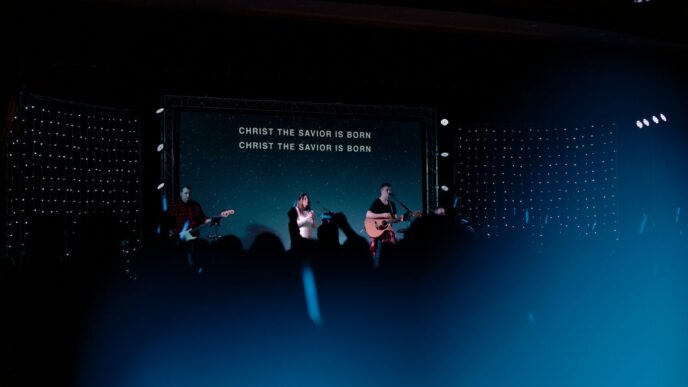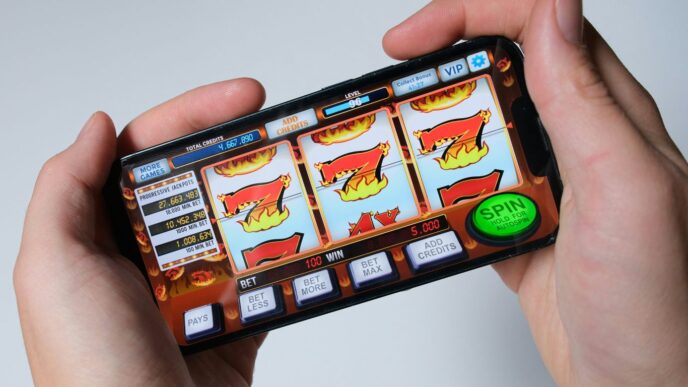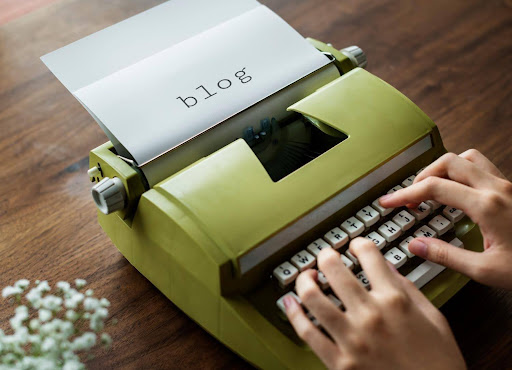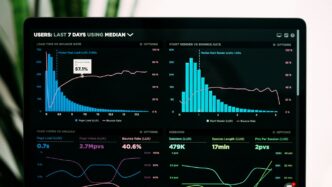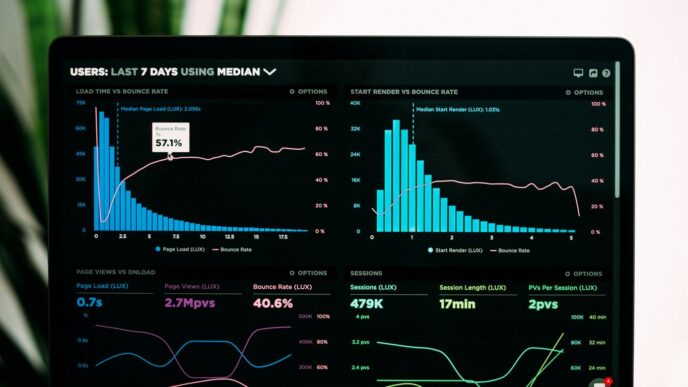Getting people to open your newsletter is one thing, but getting them to actually read it and do something? That’s the real challenge. With so many emails flooding our inboxes every day, it’s easy for yours to get lost. But don’t worry, there are some simple ways to make your newsletter stand out and actually get noticed. We’ll go over some easy, practical tips to help you make an effective newsletter that people will look forward to getting.
Key Takeaways
- Make sure your content feels personal and offers real value to each reader.
- Use interactive stuff like polls or quizzes to get people involved.
- Figure out the best times to send your newsletter so more people see it.
- Always include clear instructions on what you want readers to do next.
- Talk with your subscribers, don’t just talk at them.
Crafting Personal and Value-Driven Content
To really grab attention in crowded inboxes, your newsletters need to feel like they’re written just for the reader. It’s not enough to just blast out the same message to everyone. You’ve got to make it personal and pack it with stuff they actually care about.
Segmenting Your Audience for Relevance
Think of your audience as a bunch of different groups, not just one big blob. What works for one group might totally flop with another. Break down your subscriber list based on things like their past purchases, what they’ve clicked on before, or even just stuff they’ve told you they’re interested in. This way, you can send target content that actually hits home.
Personalizing Beyond the Name
Okay, using someone’s name is a start, but it’s like the bare minimum. Go deeper! Reference something they bought recently, or mention an event they attended. The more specific you can get, the more they’ll feel like you really know them. It shows you’re paying attention, and that makes a huge difference. Personalized subject lines can really boost your open rates, so don’t skip this step!
Delivering Hyper-Relevant Information
Don’t just recycle the same old stuff from your blog or social media. Your newsletter should give people something extra, something they can’t get anywhere else. Maybe it’s a sneak peek at a new product, an exclusive discount, or some insider tips. The goal is to make them think, "Wow, I’m glad I’m on this list!" Think about what your audience finds newsletter’s core focus and give them that.
Leveraging Interactive Elements for Engagement
Newsletters don’t have to be boring walls of text. Let’s face it, people have short attention spans. You need to grab their attention fast and keep them engaged. One way to do that is by adding interactive elements. It’s about making your newsletter less of a broadcast and more of an experience. Think about it: are you more likely to remember something you passively read, or something you actively participated in? Exactly.
Incorporating Polls and Quizzes
Polls and quizzes are a super easy way to get people clicking. They’re low-effort for the reader but high-impact for engagement. Instead of just telling people what you think, ask them! It could be something simple like, "What’s your favorite product?" or a fun quiz related to your industry. Make it relevant, make it fun, and make it easy to participate. You can even use the results to segment your audience further and tailor future content.
Encouraging Active Participation
It’s not just about polls and quizzes. Think about other ways to get people involved. Can you ask them to submit photos or stories? Can you run a contest? The key is to make it easy for people to contribute and to make them feel like their participation matters. Here are some ideas:
- Run a photo contest related to your product or service.
- Ask readers to share their experiences using your product.
- Include a "fill-in-the-blank" section related to a recent article.
Showcasing Unique and Targeted Content
Generic content is a snooze-fest. If you want people to pay attention, you need to give them something they can’t get anywhere else. This could be exclusive discounts, early access to new products, or behind-the-scenes content. The more unique and targeted your content is, the more likely people are to engage with it. Think about offering exclusive content to your newsletter subscribers. It makes them feel special and valued, and it gives them a reason to keep opening your emails. For example, you could include:
- A sneak peek at an upcoming product launch.
- An interview with a company leader.
- A special discount code just for subscribers.
Optimizing Send Times for Maximum Impact

It’s easy for your emails to get lost in the shuffle. Optimizing when you send your newsletter can make a huge difference. It’s not just about general email habits; it’s about understanding when your audience is most receptive.
Analyzing Audience Habits and Preferences
Forget generic advice about sending emails midweek. The best way to find your ideal send times is through A/B testing across different days and times. Consider your audience’s habits. Are they morning people who check emails before work, or night owls? I’ve found that testing different times daily can uncover surprising insights. Your audience might be most engaged in the evenings or even weekends, depending on their habits. You can also segment your audience to send emails at different times based on their location.
Balancing Frequency for Sustained Interest
Finding the right balance is key. Sending too many newsletters can annoy subscribers and increase unsubscribe rates. Sending too few can make them forget about you. A consistent schedule helps build trust. Think of it this way: when readers know they can rely on your emails arriving on certain days or at specific times, they’re more likely to anticipate and engage with your content. On the other hand, if your output is haphazard, sporadically sending emails one week and going silent the next—it can come across as unreliable. Regular emails demonstrate professionalism and ensure you stay top-of-mind.
Utilizing Advanced Analytics for Precision
Keep an eye on advanced analytics. Things like time spent reading each email or engagement by time zone can be super helpful. Knowing when and where readers are most engaged lets you maximize each send. For example, if you notice a spike in opens on mobile devices during lunch breaks, that’s a great time to send a quick, engaging update. Here’s a simple table to illustrate how you might track this data:
| Time of Day | Day of Week | Open Rate | Click-Through Rate |
|---|---|---|---|
| 9:00 AM | Monday | 15% | 2% |
| 12:00 PM | Wednesday | 22% | 5% |
| 6:00 PM | Friday | 18% | 3% |
Including Strong Calls to Action and Clear Next Steps
Crafting Specific and Benefit-Oriented CTAs
It’s easy to fall into the trap of using generic calls to action. "Sign up," "Buy now," and "Learn more" are okay, but they don’t exactly scream excitement. The best CTAs show some personality and get subscribers excited. Think about personalizing them – "Sign me up!" sounds way better than just "Sign up." Inject some enthusiasm, like "Send my reward!" or tie the CTA directly to the content. For example, instead of a generic "Try it out", use "Discover family facts and stories now".
Guiding Readers to Desired Actions
Getting people to open your newsletter is only half the battle. You need them to do something. That’s where clear calls to action come in. An irresistible CTA is clear, action-oriented, and easy to spot. Phrases like "Shop Now," "Get the Deal," or "Read the Full Story" work because they tell the reader exactly what to do next. To make your CTAs even better, tie them directly to the value of the content. If you’re offering ticket deals, a CTA like "Grab Your Tickets Before They’re Gone!" creates urgency and excitement. Don’t bury your CTA at the bottom of a wall of text. Make it stand out!
Experimenting with CTA Design and Placement
Placement is key. Don’t bury your CTA at the bottom of a wall of text. Make it stand out! Use contrasting colors, bold fonts, or eye-catching buttons. Limit the number of choices. One primary CTA per newsletter is usually best. Too many options can overwhelm people. Also, try different styles and placements of CTAs, such as buttons versus text links or image-based CTAs. See what performs best. Urgency can help too. CTAs with urgent language can increase conversions. For example:
- Shop New Arrivals
- Save Your Spot
- Read Our Free Guide
Building a Two-Way Connection with Subscribers
Getting people to care about your newsletter isn’t just about what you blast out to them. It’s also about how they interact with it. Think of it less like a broadcast and more like a chat. How can you get your subscribers talking back? That’s the golden ticket to building a loyal audience.
Encouraging Feedback and Dialogue
Asking for feedback turns your newsletter from a one-way street into a conversation. It shows you care what your readers think and gives them a voice. Don’t just assume you know what they want; ask them! Here are a few ways to do it:
- Include a simple question at the end of each newsletter. Something like, "What did you think of this week’s content?" or "What topics would you like to see covered in future newsletters?"
- Use polls and surveys. Tools like SurveyMonkey or even simple emoji reactions can give you quick insights.
- Actively respond to replies. If someone takes the time to email you back, acknowledge their message. Even a quick "Thanks for your feedback!" goes a long way.
Fostering a Sense of Community
Newsletters can be more than just updates; they can be a place where people connect. Think about how you can create a sense of belonging for your subscribers. Here’s how:
- Feature subscriber stories. Highlight interesting things your readers are doing. This makes them feel valued and creates a connection between subscribers.
- Create a dedicated space for discussion. This could be a forum, a Facebook group, or even just a specific hashtag on social media. Encourage subscribers to share their thoughts and ideas.
- Run contests and giveaways. These can be a fun way to get people involved and reward their loyalty. Make sure the prizes are relevant to your audience’s interests.
Transforming Newsletters into Conversations
Turn your newsletter into a discussion starter. Don’t just present information; invite responses and opinions. Here’s how to make it happen:
- Ask open-ended questions. Instead of yes/no questions, ask things like, "What are your thoughts on…?" or "How has this affected you?"
- Share different perspectives. Present multiple viewpoints on a topic and encourage subscribers to weigh in. This can spark interesting debates and create a more engaging experience.
- Actively moderate the conversation. If you’re creating a space for discussion, make sure it stays respectful and productive. Address any issues promptly and keep the conversation flowing. Consider employee contributions to boost engagement.
Implementing A/B Testing for Continuous Improvement
Refining Strategy Based on Performance Data
Okay, so you’re sending out newsletters, that’s great! But are they really working? A/B testing is how you find out. It’s not just about guessing what your audience likes; it’s about actually knowing. A/B testing lets you compare two versions of your newsletter to see which performs better. Think of it as a science experiment for your email list. You change one thing, send it to a small group, and see what happens. Then, you use that data to make your next newsletter even better. It’s a cycle of learning and improving. For example, you can use automated reports to track the performance of your A/B tests.
Discovering Audience Preferences Through Testing
What do your subscribers really want? You might think you know, but testing can reveal some surprises. Maybe they prefer shorter subject lines, or maybe they love images of cats (hey, you never know!). A/B testing can help you figure out all of this. Here’s how you can approach it:
- Test different subject lines: See which ones get more opens.
- Try different calls to action: Do people prefer "Shop Now" or "Learn More"?
- Experiment with different layouts: Does a single-column design work better than a multi-column one?
It’s all about finding what clicks with your audience. You might discover that a light-hearted tone performs better than a formal one. Each A/B test gives you a little bit more information about what your subscribers respond to.
Optimizing Newsletter Length and Format
Is your newsletter too long? Too short? Are you using the right format? These are important questions! Some people like quick, scannable content, while others want in-depth articles. Testing different lengths and formats can help you find the sweet spot. Consider these points:
- Content Length: Experiment with shorter, more concise newsletters versus longer, more detailed ones.
- Image Usage: Test newsletters with and without images to see which performs better.
- Format: Try different layouts, such as single-column versus multi-column, or text-based versus image-heavy.
Here’s a simple table to track your results:
| Element Tested | Version A | Version B | Winner | Notes |
|---|---|---|---|---|
| Subject Line | Short | Long | A | More opens |
| CTA | Shop Now | Learn More | B | More clicks |
| Length | Short | Long | A | Higher engagement |
By tracking your results, you can segment your email list and make informed decisions about your newsletter strategy.
Understanding Your Effective Newsletter Audience
It’s easy to get caught up in crafting the perfect subject line or designing eye-catching visuals, but before you do any of that, you need to know who you’re talking to. A newsletter that speaks directly to your audience’s needs and interests is way more likely to hit the mark. Let’s break down how to get to know your subscribers.
Defining Your Newsletter’s Core Focus
What’s the main thing you want your newsletter to be about? Is it product sales, industry news, or something else entirely? Having a clear focus is key. If you try to cram too much in, your message gets diluted, and people are less likely to pay attention. Think about what your audience needs from you, and build your newsletter around that.
Conducting Subscriber Surveys for Insights
One of the best ways to figure out what your audience wants is to simply ask them! Send out a survey to your subscribers and ask about their interests, pain points, and what they’d like to see more of in your newsletter. You can use tools like SurveyMonkey or Google Forms to create and distribute your survey. Here’s a simple example of questions you could ask:
- What topics are you most interested in?
- What are your biggest challenges related to newsletter strategy?
- What type of content do you find most valuable (e.g., articles, videos, case studies)?
- How often would you like to receive our newsletter?
Aligning Content with Reader Interests
Once you’ve gathered data about your audience, it’s time to put it to use. Tailor your content to match their interests and needs. If your survey reveals that many subscribers are interested in a specific topic, create content that addresses that topic directly. If you know their industry, make sure the content is relevant to their day-to-day work. This alignment is what turns a generic email into a direct call-to-action that people actually want to read.
Wrapping It Up: Your Newsletter Journey
So, we’ve talked a lot about making your newsletters better. It’s not just about sending stuff out; it’s about making a real connection with people. Think about what we covered: making content personal, adding cool interactive bits, sending at the right time, having clear calls to action, and always testing things out. These ideas can really help your newsletters stand out in a crowded inbox. A good newsletter isn’t just opened; it gets people talking, gives them something useful, and makes them want to come back for more. Whether you’re trying to get your brand out there, sell something, or just share your thoughts, these steps can help you link up with your subscribers, get them more involved, and see some good results. Just start trying some of these things, and watch your newsletters become a strong way to build loyalty and make an impact.
Frequently Asked Questions
How can I make my newsletter more interesting for readers?
To make your newsletter stand out, focus on giving your readers real value. This means sending them stuff that matters to them, not just general updates. Think about what they care about most and give them that. Also, make it easy and fun to read, maybe with some quick polls or questions they can answer.
When is the best time to send my newsletter?
Figuring out the best time to send your newsletter is like a puzzle. There’s no single perfect answer. You need to watch when your readers are usually online and checking emails. Try sending at different times and on different days to see what works best for your specific audience. It’s all about testing and learning.
What’s a ‘Call to Action’ and how do I make it good?
A ‘Call to Action’ (CTA) is like a clear instruction telling your readers what to do next. Instead of just saying ‘Click Here,’ try something more exciting like ‘Get Your Free Guide Now!’ or ‘Join the Fun!’ Make sure it’s easy to see and understand, and always tell them what they’ll get by clicking.
What is A/B testing and why is it important for newsletters?
A/B testing is like trying out two different versions of something to see which one works better. For your newsletter, you might send one group of people a subject line, and another group a different one, then see which gets more opens. This helps you learn what your readers like and improve your newsletters over time.
How can I get my newsletter readers to talk back to me?
To get your readers more involved, ask them questions, run quick polls, or even have a small contest. Make it easy for them to reply or share their thoughts. When they feel like they’re part of a conversation, they’ll be more likely to open your next email.
Does my newsletter need to look good on phones?
Yes, it’s super important! People check emails on their phones all the time. If your newsletter looks messy or is hard to read on a small screen, they’ll probably just close it. Make sure it looks good and works well on phones, tablets, and computers.




